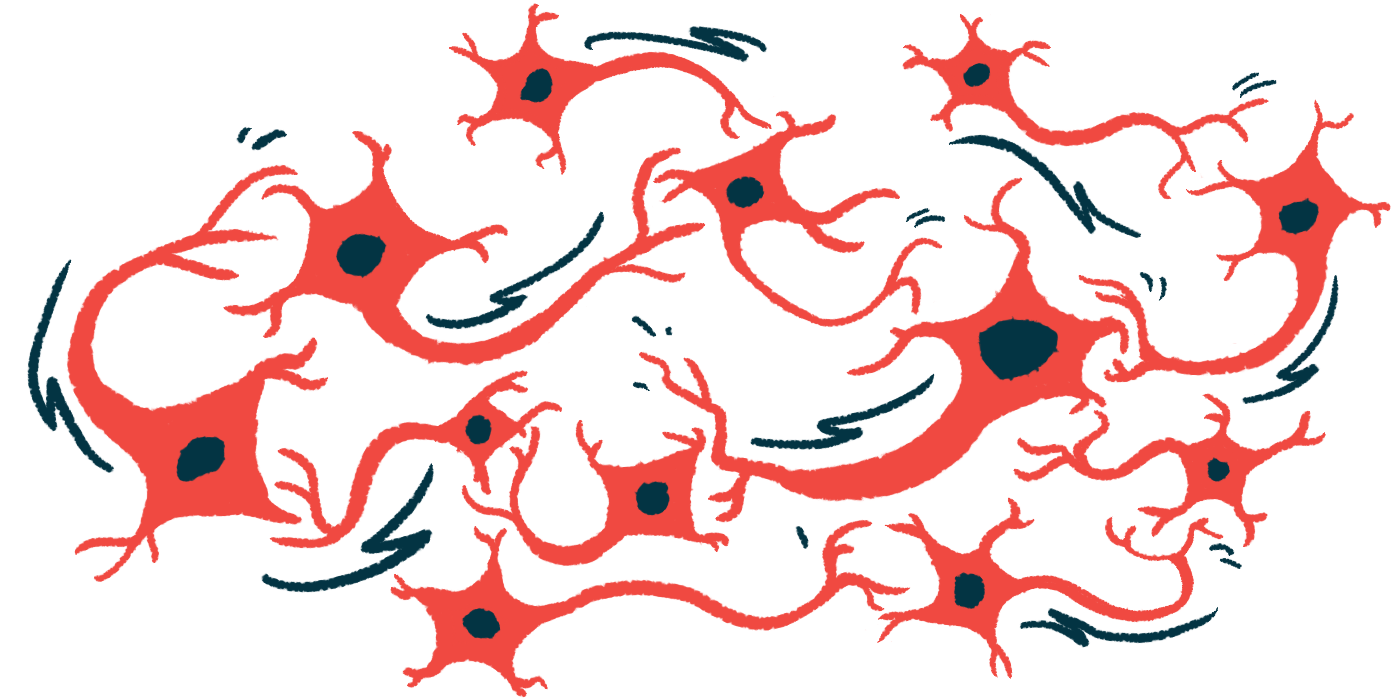Proteins Called Tenascins Found to Block Myelin Repair in Mouse Model

Proteins called tenascins block the regeneration of myelin by modulating the activity of oligodendrocytes, myelin-making cells of the central nervous system, a study in mouse models indicates.
“Our research results open up new therapeutic approaches for the treatment of demyelinating diseases such as multiple sclerosis,” Juliane Bauch, a researcher at Ruhr-University Bochum (RUB) in Germany and a study co-author, said in a RUB press release.
The study, “The Extracellular Matrix Proteins Tenascin-C and Tenascin-R Retard Oligodendrocyte Precursor Maturation and Myelin Regeneration in a Cuprizone-Induced Long-Term Demyelination Animal Model,” was published in Cells.
In multiple sclerosis (MS), inflammation in the brain and spinal cord (the central nervous system) causes demyelination, the loss of the fatty myelin sheath that wraps around nerve fibers and helps them to send electrical signals. Myelin repair, or remyelination, is possible, but it is not very efficient. Developing therapies that could improve remyelination is considered a holy grail for many MS researchers, but first it requires an understanding exactly why remyelination is impaired.
A pair of scientists at RUB conducted a series of experiments to test how two tenascin proteins, tenascin-C and tenascin-R, affect myelin repair. Tenascin proteins are a part of the extracellular matrix, the network of proteins and other molecules that helps to give structure to the body’s tissues and helps to regulate many cellular activities.
“The impact of the extracellular matrix on the restoration of myelin membranes is enormous and could become a key target for therapy,” Bauch said.
Their experiments included mice genetically engineered to be unable to make either one of the tenascin proteins, as well as wild-type or normal mice able to produce both proteins. The animals then were given a chemical, called cuprizone, that induces myelin loss — to mimic chronic demyelination — and the researchers assessed the amount of myelin present in their brains.
Results showed that tenascin-deficient mice had markedly more and thicker myelin sheaths following cuprizone exposure than did wild-type mice.
“Remyelination was more efficient in the tenascin knockouts than in the wildtype, and most effective in the absence of [tenascin-C],” the researchers wrote.
Further analyses indicated that mice lacking tenascins, particularly tenascin-C, had greater recruitment of myelin-making oligodendrocytes, as well as immature cells called oligodendrocyte precursor cells (OPCs), in the brain and spinal cord. Since these cells make myelin and are important for remyelination, the findings further support the idea that remyelination is increased in tenascin-deficient mice.
“The elimination of [tenascin-C] and [tenascin-R] exerts a clear impact on the remyelination of cuprizone-induced myelin degradation,” the team concluded. “Both the recruitment of OPCs to the lesion territory and their local differentiation to myelinating cells are promoted in the absence of tenascins.
“Consequently, remyelination is supported and myelin repair is accelerated,” the scientists added.







